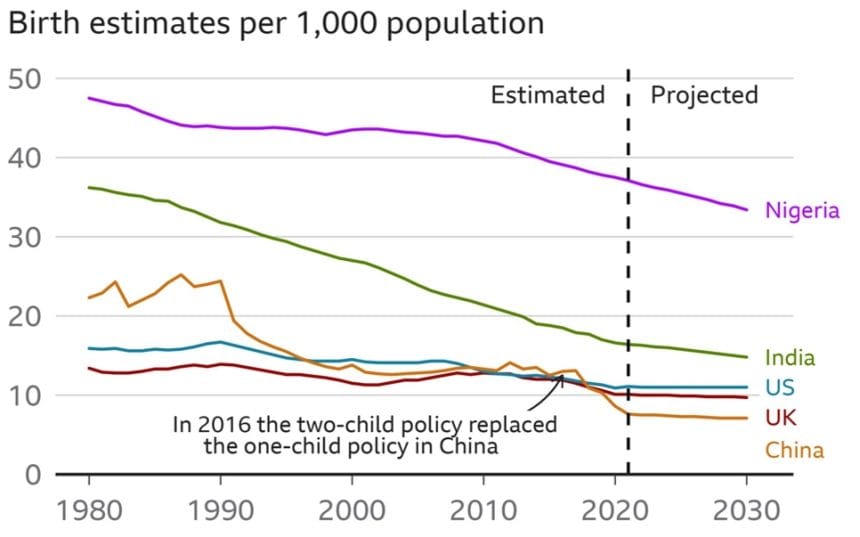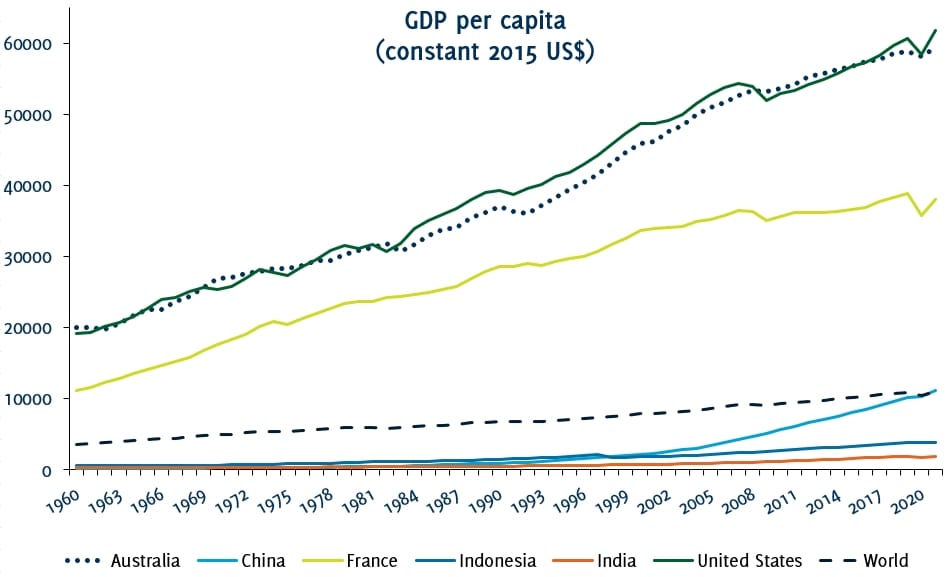China’s anticipated shrinking population is now official. However, continued growth in its per capita income will fuel its ongoing need for grain imports.
In late January 2023, China’s National Bureau of Statistics officially reported that China’s population declined in 2022 by 850,000 to 1.41 billion. There were 10.41 million deaths in 2022 but only 9.56 million births. The birth rate in China has been steadily falling over several decades (Chart 1), even despite the scrapping of its one-child policy.
China’s fertility rate (births per woman) reached an all-time low of 1.28 in 2020. By comparison, India and the USA, in the same year, recorded fertility rates of 2.05 and 1.64 respectively. Even Japan, with its notoriously low birth rate and ageing population, had a fertility rate of 1.34. Surveys in China consistently reveal that Chinese women now view the ideal number of children as one, two, or zero, despite the introduction of a two-child policy in 2015.

Accompanying the cessation of population growth in China, and the ageing of its population, is a remarkable lift in China’s per capita GDP (Chart 2). With increasing per capita wealth comes dietary change that favours greater consumption of meat and dairy products; and these foodstuffs often rely on grain feeding. Hence, despite the commencement of the diminution of China’s population, wealth and resultant dietary change will sustain China’s need to continue to import feed grains and some other supplementary food grains.

India has now replaced China as the world’s most populous country. Unlike China, India’s population is only expected to grow further, reaching 1.52 billion by 2036, according to a July 2020 projection by India’s National Commission on Population. Moreover, India is yet to experience the surge in increased GDP per capita that China has experienced. If ever India accelerates its GDP per capita then its internal demand for foodstuffs, both by volume and variety, will form an immense grain market.
Expert grains industry analysis and commentary from AEGIC’s Economics and Market Insight Team on a range of big-picture topics that affect Australia’s export grains sector. Read the Horizons back catalogue.


